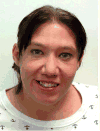Adults with genetic syndromes and cardiovascular abnormalities: clinical history and management
- PMID: 18580689
- PMCID: PMC2671242
- DOI: 10.1097/gim.0b013e3181772111
Adults with genetic syndromes and cardiovascular abnormalities: clinical history and management
Abstract
Cardiovascular abnormalities, especially structural congenital heart defects, commonly occur in malformation syndromes and genetic disorders. Individuals with syndromes comprise a significant proportion of those affected with selected congenital heart defects such as complete atrioventricular canal, interrupted arch type B, supravalvar aortic stenosis, and pulmonary stenosis. As these individuals age, they contribute to the growing population of adults with special health care needs. Although most will require longterm cardiology follow-up, primary care providers, geneticists, and other specialists should be aware of (1) the type and frequency of cardiovascular abnormalities, (2) the range of clinical outcomes, and (3) guidelines for prospective management and treatment of potential complications. This article reviews fundamental genetic, cardiac, medical, and reproductive issues associated with common genetic syndromes that are frequently associated with a cardiovascular abnormality. New data are also provided about the cardiac status of adults with a 22q11.2 deletion and with Down syndrome.
Figures






Similar articles
-
[Congenital cardiovascular malformations and chromosome microdeletions in 22q11.2].Dtsch Med Wochenschr. 1999 Jan 8;124(1-2):3-7. doi: 10.1055/s-2008-1062601. Dtsch Med Wochenschr. 1999. PMID: 9951451 German.
-
Cardiac defects and results of cardiac surgery in 22q11.2 deletion syndrome.Dev Disabil Res Rev. 2008;14(1):35-42. doi: 10.1002/ddrr.6. Dev Disabil Res Rev. 2008. PMID: 18636635 Review.
-
Pregnancy outcomes after assisted human reproduction.J Obstet Gynaecol Can. 2014 Jan;36(1):64-83. doi: 10.1016/S1701-2163(15)30685-X. J Obstet Gynaecol Can. 2014. PMID: 24444289
-
Frequency of 22q11 deletions in patients with conotruncal defects.J Am Coll Cardiol. 1998 Aug;32(2):492-8. doi: 10.1016/s0735-1097(98)00259-9. J Am Coll Cardiol. 1998. PMID: 9708481
-
Review of the Pathophysiology and Clinical Manifestations of 22q11.2 Deletion and Duplication Syndromes.Clin Rev Allergy Immunol. 2025 Mar 4;68(1):23. doi: 10.1007/s12016-025-09035-4. Clin Rev Allergy Immunol. 2025. PMID: 40038168 Review.
Cited by
-
Fatal heart failure caused by severe pulmonary regurgitation, tricuspid regurgitation and late-onset mitral stenosis in an adult patient with Noonan syndrome: a case report.BMC Cardiovasc Disord. 2018 Jul 16;18(1):148. doi: 10.1186/s12872-018-0878-1. BMC Cardiovasc Disord. 2018. PMID: 30012103 Free PMC article.
-
Elastin Insufficiency Predisposes Mice to Impaired Glucose Metabolism.J Mol Genet Med. 2014 Oct;8(3):129. doi: 10.4172/1747-0862.1000129. J Mol Genet Med. 2014. PMID: 26167199 Free PMC article.
-
Congenital heart diseases and cardiovascular abnormalities in 22q11.2 deletion syndrome: From well-established knowledge to new frontiers.Am J Med Genet A. 2018 Oct;176(10):2087-2098. doi: 10.1002/ajmg.a.38662. Epub 2018 Apr 16. Am J Med Genet A. 2018. PMID: 29663641 Free PMC article. Review.
-
Klf15 deficiency is a molecular link between heart failure and aortic aneurysm formation.Sci Transl Med. 2010 Apr 7;2(26):26ra26. doi: 10.1126/scitranslmed.3000502. Sci Transl Med. 2010. PMID: 20375365 Free PMC article.
-
Noonan syndrome.Lancet. 2013 Jan 26;381(9863):333-42. doi: 10.1016/S0140-6736(12)61023-X. Epub 2013 Jan 10. Lancet. 2013. PMID: 23312968 Free PMC article. Review.
References
-
- Pierpont ME, Basson CT, Benson DW, Gelb BD, et al. The genetic basis for congenital heart defects: Current knowledge. A scientific statement from the American Heart Association Council on Cardiovascular Disease in the Young endorsed by the American Academy of Pediatrics. Circulation. 2007;115:3015–3058. - PubMed
-
- Goldmuntz E, Lin AE. Moss and Adams’ Heart Disease in Infants, Children, and Adolescents, including the Fetus and Young Adult. 7. Philadelphia: Lippincott Williams & Wilkins; 2008. Genetics of congenital heart defects; pp. 545–572.
-
- Brickner ME, Hillis LD, Lange RA. Congenital heart disease in adults. First of two parts. N Engl J Med. 2000;342:256–263. - PubMed
-
- Brickner ME, Hillis LD, Lange RA. Congenital heart disease in adults. Second of two parts. N Engl J Med. 2000;342:334–342. - PubMed
-
- Foster E, Graham TP, Driscoll DJ, Reid GJ, et al. Task Force 2: Special health care needs of adults with congenital heart disease. J Am Coll Cardiol. 2001;37:1161–1198. - PubMed
Deletion 22q11.2
-
- Botto LD, May K, Fernhoff PM, Correa A, et al. A population-based study of the 22q11.2 deletion: phenotype, incidence, and contribution to major birth defects in the population. Pediatrics. 2003;112:101–107. - PubMed
-
- Oskarsdottir S. Itellecta DocusysAB. Vastra Frolunda; Goteborg, Sweden: 2005. The 22q11 deletion syndrome, A clinical and epidemiological study; pp. 1–183.
Down syndrome
-
- Centers for Disease Control and Prevention. Improved national prevalence estimates for 18 selected major birth defects- United States, 1999–2001. MMWR. 2005;54:1301–1305. - PubMed
-
- Wessels MW, Los FJ, Frohn-Mulder IME, Niermeijer MF, et al. Poor outcome in Down syndrome fetuses with cardiac anomalies or growth retardation. Am J Med Genet. 2003;116A:147–151. - PubMed
-
- Yang Q, Rasmussen SA, Friedman JM. Mortality associated with Down’s syndrome in the USA from 1983 to 1997: a population-based study. Lancet. 2002;359:1019–1025. - PubMed
-
- Bittles AH, Glasson EJ. Clinical, social and ethical implications of changing life expectancy in Down syndrome. Dev Med Child Neurol. 2004;46:282–286. - PubMed
-
- Hunter AGW. Down syndrome. In: Cassidy SB, Allanson JE, editors. Management of Genetic Syndromes. 2. John Wiley and Sons; Hoboken: 2004. pp. 191–210.
Turner syndrome
-
- Nielsen J, Wohlert M. Sex chromosome abnormalities found among 34,910 newborn children: results from a 13-year incidence study in Arhus, Denmark. Birth Defects Orig Artic Ser. 1990;26:209–223. - PubMed
-
- Stochholm K, Juul S, Juel K, Naera RW, Gravholt CH. Prevalence, incidence, diagnostic delay and mortality in Turner syndrome. J Clin Endocrinol Metab. 2006;91:3897–3902. - PubMed
-
- Sybert VP, McCauley E. Turner’s syndrome. N Engl J Med. 2004;351:1227–1238. - PubMed
-
- Lacro RV, Jones KL, Benirschke K. Coarctation of the aorta in Turner syndrome: a pathologic study of fetuses with nuchal cystic hygromas, hydrops fetalis, and female genitalia. Pediatrics. 81:445–451. - PubMed
-
- Loscalzo ML, Van PL, Ho VB, Bakalov VK, et al. Association between fetal lymphedema and congenital cardiovascular defects in Turner syndrome. Pediatrics. 2005:115732–735. - PubMed
Williams-Beuren syndrome
-
- Cherniske EM, Carpenter TO, Klaiman C, Young E, et al. Multisystem study of 20 older adults with Williams syndrome. Am J Med Genet A. 2004;131:255–264. - PubMed
-
- Morris CA, Thomas IT, Greenberg F. Williams syndrome: autosomal dominant inheritance. Am J Med Genet. 1993;47:478–481. - PubMed
-
- Morris CA, Demsey SA, Leonard CO, Dilts C, et al. Natural history of Williams syndrome: physical characteristics. J Pediatr. 1988;113:318–326. - PubMed
-
- Mervis CB, Robinson BF, Bertrand J, Morris CA, et al. The Williams syndrome cognitive profile. Brain Cogn. 2000;44:604–628. - PubMed
-
- Klein-Tasman BP, Risi S, Lord CE. Socio-communicative deficits in young children with Williams syndrome: performance on the autism diagnostic observation schedule. Child Neuropsychol. 2007;13:444–67. - PubMed
Marfan syndrome
-
- Pyeritz RE. Marfan syndrome and related disorders. In: Rimoin DL, Conner JM, Pyeritz RE, Korf BR, editors. Principles and Practice of Medical Genetics. 5. Philadelphia: Churchill Livingstone; 2007. pp. 3579–3624.
-
- DePaepe A, Deitz HC, Devereux RB, Hennekem R, et al. Revised diagnostic criteria for the Marfan syndrome. Am J Med Genet. 1996;62:417–426. - PubMed
-
- Chow K, Litt HI, Pyeritz RE. Abdominal visceral findings in the Marfan syndrome. Genet Med. 2007;9:208–212. - PubMed
-
- Neptune ER, Frischmeyer PA, Arking DE, et al. Dysregulation of TGF-beta activation contributes to pathogenesis in Marfan syndrome. Nature Genet. 2003;33:407–411. - PubMed
Disorders of TGF-β Receptors
-
- Pannu H, Fadulu VT, Chang J, Lafont A, et al. Mutations in transforming growth factor-beta receptor type II cause familial thoracic aortic aneurysms and dissections. Circulation. 2005;112:513–520. - PubMed
-
- Sakai H, Visser R, Ikegawa S, Ito E, et al. Comprehensive genetic analysis of relevant four genes in 49 patients with Marfan syndrome and Marfan-related phenotypes. Am J Med Genet A. 2006;140:1719–1725. - PubMed
-
- Adès LC, Sullivan K, Biggin A, Haan EA, Brett M, Holman KJ, Dixon J, Robertson S, Holmes AD, Rogers J, Bennetts B. FBN1, TGFBR1, and the Marfan-craniosynostosis/mental retardation disorders revisited. Am J Med Genet A. 2006;140:1047–1058. - PubMed
-
- Viassolo V, Lituania M, Marasini M, Dietz H, et al. Fetal aortic root dilation: a prenatal feature of the Loeys-Dietz syndrome. Prenat Diagn. 2006;26:1081–1083. - PubMed
Hereditary Hemorrhagic Telangectasia
-
- Guttmacher A, Marchuck D, Pyeritz RE. Hereditary hemorrhagic telangiectasia. In: Rimoin DL, Conner JM, Pyeritz RE, Korf BR, editors. Principles and Practice of Medical Genetics. 5. Philadelphia: Churchill Livingstone; 2007. pp. 1200–1213.
-
- Bossler AD, Richards J, George C, Godmilow L, et al. A. Novel mutations in ENG and ACVRL1 identified in a series of 200 individuals undergoing clinical genetic testing for hereditary hemorrhagic telangiectasia (HHT): correlation of genotype with phenotype. Hum Mutat. 2006;27:667–75. - PubMed
-
- Curie A, Lesca G, Cottin V, Edery P, et al. Long-term follow-up in 12 children with pulmonary arteriovenous malformations: confirmation of hereditary hemorrhagic telangiectasia in all cases. J Pediatr. 2007;151:299–306. - PubMed
-
- Pollack JS, Saluja S, Thabet A, Henderson KJ, et al. Clinical and anatomic outcomes after embolotherapy of pulmonary arteriovenous malformations. J Vasc Interv Radiol. 2006;17:35–45. - PubMed
Holt-Oram syndrome
-
- McDermott DA, Bressan MC, He J, Lee JS, et al. TBX5 genetic testing validates strict clinical criteria for Holt-Oram syndrome. Pediatr Res. 2005;58:981–6. - PubMed
-
- Csaba E, Marta V, Endre C. Holt-Oram syndrome. Orv Hetil. 1991;132:73–78. - PubMed
-
- Li QY, Newbury-Ecob RA, Terrett JA, Wilson DI, et al. Holt-Oram syndrome is caused by mutations in TBX5, a member of the Brachyury (T) gene family. Nat Genet. 1997;15:21–29. - PubMed
-
- Varma PK, Padmakumar R, Harikrishnan s, Koshy T, et al. Holt-Oram syndrome with hemiazygous continuation of the inferior vena cava. Asian Cardiovasc Thorac Ann. 2002;14:161–163. - PubMed
-
- Vaughan CJ, Basson CT. Molecular determinants of atrial and ventricular septal defects and patent ductus arteriosus. Am J Med Genet. 2000;97:304–309. - PubMed
Noonan syndrome
-
- Tartaglia M, Mehler EL, Goldberg R, Zampino G, et al. Mutations in PTPN11, encoding the protein tyrosine, phosphatase SHP-2, cause Noonan syndrome. Nat Genet. 2001;29:465–468. - PubMed
-
- Zenker M, Buheitel G, Rauch R, Koenig R, et al. Genotype-phenotype correlations in Noonan syndrome. J Pediatr. 2004;144:368–374. - PubMed
-
- Jongmans M, Sistermans EA, Rikken A, Nillesen WM, et al. Genotypic and phenotypic characterization of Noonan syndrome: new data and review of the literature. Am J Med Genet A. 2005;134:165–70. - PubMed
-
- Schubbert S, Zenker M, Rowe SL, Boll S, et al. KRAS mutations cause Noonan syndrome. Nat Genet. 2006;38:331–336. - PubMed
Reproduction and Genetic Counseling
-
- Canobbio MM, Rapkin AJ, Perloff JK, Lin A, Child JS. Menstrual patterns in women with congenital heart disease. Pediatr Cardiol. 1995;16:12–15. - PubMed
-
- Canobbio MM, Perloff JK, Rapkin AJ. Gynecological health of females with congenital heart disease. Inter J Cardiol. 2005;98:379–387. - PubMed
-
- Hoess K, Goldmuntz E, Pyeritz RE. Genetic counseling for congenital heart disease: new approaches for a new decade. Curr Cardiol Rep. 2002;4:68–75. - PubMed
-
- Van Rijen EH, Utens EM, Roos-Hesselink JW, Merijboom FJ, van Domdurg RT, Roelandt JR, Bogers AJ, Verhulst FC. Current subjective state of health, and longitudinal psychological well-being over a period of 10 years, in a cohort of adults with congenital cardiac disease. Cardiol Young. 2005;15:168–175. - PubMed
Transitioning care
-
- American Academy of Pediatrics; American Academy of Family Physicians; American College of Physicians-American Society of Internal Medicine. A consensus statement on health care transitions for young adults with special health care needs. Pediatrics. 2002;110:1304–6. - PubMed
-
- Pober BR, Morris CA. Diagnosis and management of medical problems in adults with Williams-Beuren syndrome. 2007. Am J Med Genet Part C Semin Med Genet. 2007;145C:280–290. - PubMed
-
- Fernandes SM, Landsberg MJ. Transitioning the young adult with congenital heart disease for life-long medical care. Pediatr Clin N Am. 2004;51:1739–1748. - PubMed
-
- Reid GJ, Irvine MJ, McCrindle BW, Sananes R, et al. Prevalence and correlates of successful transfer from pediatric to adult health care among a cohort of young adults with complex congenital heart defects. Pediatrics. 2004;113:e97–e205. - PubMed
Tables
-
- Battaglia A, Carey JC, Wright TJ. Wolf-Hirschhorn (4p-) syndrome. Adv Pediatr. 2001;48:75–113. - PubMed
-
- Spinner NB. Genetics of Alagille syndrome. Progr Pediatr Cardiol. 2005;20:169–176.
-
- Narumi Y, Aoki Y, Niihori T, Neri G, et al. Molecular and clinical characterization of cardio-facio-cutaneous (CFC) syndrome. Am J Med Genet. 143A:799–807. Part A. - PubMed
-
- Lin AE, Grossfeld PD, Hamilton R, Smoot L, Proud V, Weksberg R, Gripp K, Wheeler P, Picker J, Irons M, Zackai E, Scott CI, Nicholson L. Further delineation of cardiac anomalies in Costello syndrome. Am J Med Genet. 2002;111:115–129. - PubMed
Publication types
MeSH terms
Grants and funding
LinkOut - more resources
Full Text Sources
Medical
Research Materials
